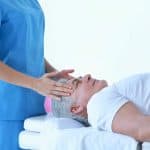Considering the popularity of designer footwear, it is common for clients to come in for a massage wearing high heels. Not surprisingly, these massage recipients (usually women) are likely to suffer from chronic pain. As healthcare professionals who may be called on to reverse the impact of a high heel habit, massage therapists are in an ideal position to educate affected clients about the consequences of their unfortunate choice in shoes.
High-heeled shoes are stylish; they give wearers additional height and help elongate the leg. Despite the stress it places on the bones, muscles and tendons of the legs and spine, our culture’s definition of a sexy woman typically involves high heels. However, most women don’t realize the steep price they will pay for everyday use of high heels. Of course, that price – chronic pain – is far from sexy.
Human bodies function as a whole. Accordingly, tension in one region produces a series of related, compensatory tensions that extend throughout the body. Chronic high-heeled wearers are highly prone to problems in the following areas:
- Achilles tendon – When the front of the foot becomes lower than the heel, the Achilles tendon shortens and tightens up. The higher the heel, the shorter the Achilles tendon becomes. Over time, Achilles tendonitis will develop. While Achilles tendonitis is notoriously challenging to treat, massage therapy can be helpful. For more information about helping Achilles tendonitis, read Solutions and Sports Massage Techniques for Achilles Tendonitis.
- Calf – Whether it is the gastrocnemius or the soleus that is responsible for the pain, wearing high heels is known for causing calf cramps. This is because these muscles contract to adjust for the angle created from an elevated heel. For helping clients overcome these sharp calf pains, read Massage Solutions for Muscle Cramps.
- Knee – The posture required for walking in high heels puts excessive force on the medial side of the knee, a stress that can easily predispose someone to osteoarthritis of the knee. One study found that knee joint pressure increased by up to 26 percent when high-heeled shoes are worn. For more information about osteoarthritis and how to address it, read Massage Therapy Provides Pain Relief From Osteoarthritis.
- Bunions – High heels cause the foot to overarch and places more pressure on the medial side of the foot. This changes the weight distribution of the body and causes a bony growth on the joint at the base of the big toe – forcing the big toe to angle in towards the other toes. Massage therapy can break up adhesions caused by a bunion and may help to realign the foot; however, extreme cases may require surgery.
- Low back – High-heeled shoes throw the entire weight of the wearer forward, demanding additional effort to sustain upright balance. Thus, wearers of high-heeled shoes must use extra muscular effort to keep from falling forward. A great deal of this effort is concentrated in the lower back, producing an exaggerated arch, which can easily lead to back pain.
- And more – While the preceding areas are usually the hardest hit by wearing high heels, they are not exclusive. Habitual high heel wearers are also prone to problems with shallow breathing, a tight neck and shoulders, ankle instability, Morton’s neuroma and hammertoes.
Initially, clients who covet high-heeled shoes may not want to hear about the cause of their chronic pain. However, a desire to feel good will eventually encourage most pain sufferers to reevaluate their choice in footwear. Providing a diagram, or simply relaying how an elevated heel impacts the body can get through to these individuals. When that happens, your clients will thank you for suggesting they only wear high heels on special occasions, because this lifestyle change can singlehandedly end a cycle of chronic pain.















